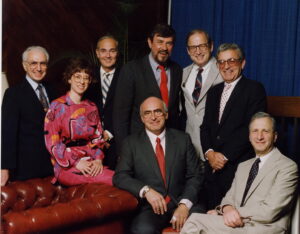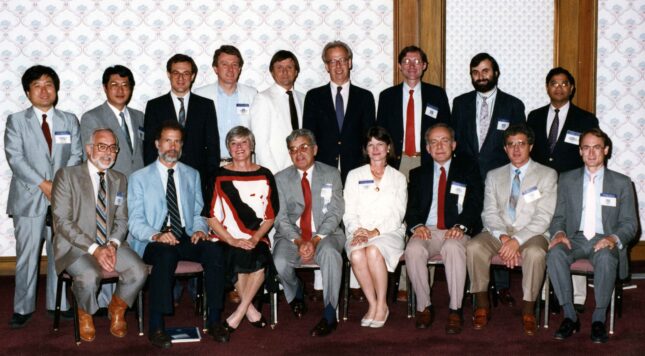Founding a professional society

In 1974, Avioli and Peck, along with other pioneers of the field, including Drs. Steven Krane and John Potts (Harvard University), Lawrence Raisz (University of Connecticut), Claude Arnaud (University of California San Francisco), Larry Riggs (Mayo Clinic), Norman Bell (University of South Carolina) and Paula Stern (Northwestern University), met at the Drake Hotel, in Chicago during the Endocrine Society meeting.
Their work and foresight laid the foundations of what would become the American Society for Bone and Mineral Research (ASBMR).
ASBMR, which rapidly grew into the premier international professional organization in bone and mineral research, now counts over 5,000 members all over the globe.
It was incorporated in St. Louis in 1977, with Avioli functioning as its first president. For several years, Avioli’s assistant Shirley Hohl performed most of the administrative duties for the organization, including program and logistics planning for the annual meetings, from the division offices in St. Louis. ASBMR acknowledged her contributions by establishing the Shirley Hohl Service Award in her memory.
The first trainees
The first wave of the division’s trainees went on to develop independent research programs and take leadership roles in academia.
John G. Haddad, MD, became the Endocrine Division Chief at the University of Pennsylvania; Theodore J. Hahn, MD, contributed to develop the bone and mineral research group at the University of California, Los Angeles; and Steven Teitelbaum, MD, built a cutting-edge research program in the Department of Pathology at Washington University School of Medicine, and became a world-class leader in osteoclast biology.
Extending Avioli’s philosophy, Teitelbaum has mentored numerous trainees and developed new generations of scientists in the bone and mineral field. To this day, Teitelbaum remains a highly regarded mentor and leader of our field. Michael Whyte, MD, who chose to continue his career and affiliation with the division, created a unique Research Center within the St. Louis Unit of the Shriners Hospital system. In addition to pursuing research into the genetic bases of metabolic bone disorders with Steven Mumm, PhD, a geneticist and younger faculty member, this center continues to provide a model of outstanding patient care for children with a variety of musculoskeletal disorders, and in particular osteogenesis imperfecta, X-linked hypophosphatemic rickets, and hypophosphatasia.

Basic bone biology program
During the 1980s, the division rapidly developed a basic bone biology program, spearheaded by a NIH-sponsored Program Project Grant focused on the role of intracellular calcium signaling in aging.
This research program, conceived and led by Avioli, received continuous funding for 18 years and produced a vast number of original contributions.
Among these are the discoveries that parathyroid hormone activates multiple signaling pathways, via activation of different G proteins; the identification of rapid, non-genomic effects of vitamin D metabolites; and the establishment of human models of bone cell cultures.
The program also served as the springboard for several new independent projects by the division’s younger investigators, who expanded the research interests to encompass osteoblast biology, signal transduction, cell-cell interactions, and regulation of bone cells by growth factors and cytokines.
One of the most prominent trainees, Ian Reid, MD, became a world leader in osteoporosis research and was appointed Deputy Dean of the Faculty of Medical and Health Sciences, at the University of Auckland, New Zealand, and functioned as President of the International Bone and Mineral Society.